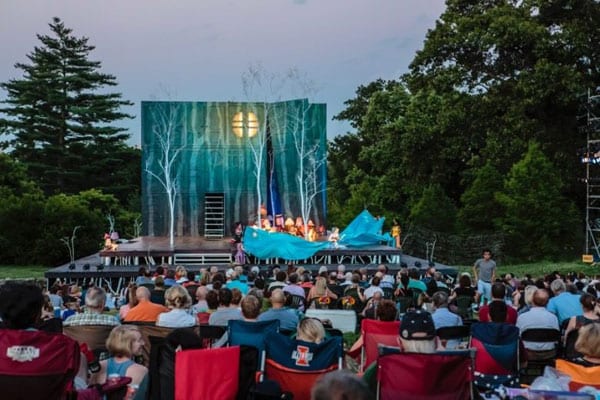
October 18, 2018; Next City
Readers of NPQ will be familiar with the idea that artists often find themselves at the center of civic life—not only on stages and in galleries or museums—as creative problem solvers, facilitators, and advocates. And where public funds are being invested in arts nonprofits and projects, artists increasingly are being invited into conversations about building community, fostering understanding (often relative to racial tensions), and inviting citizens who do not see themselves as artists to tap into their personal wells of creativity.
In St. Louis, a report published last month signals a shift in how public funds—partially supported by hotel and motel occupancy taxes—will be awarded through the city’s Regional Arts Commission. The report, titled “Arts &: A Creative Vision for St. Louis,” is all about the ampersand—the “and” generated by every arts experience, which people don’t always stop to consider. The plan is to prioritize grants for arts organizations and projects that help strengthen the overall fabric of civic life. As explained by Felicia Shaw, executive director of the commission:
We traditionally think of the arts as a place where you go and buy a ticket and sit down in front of somebody else doing it—how do we get people to want to pick up that guitar and play with someone else? The reason why tapping into your own creativity is really important to us is… that’s where civic engagement happens. That’s where people get to know their neighbors and they get to activate their neighborhoods. They’re coming out of their neighborhoods and singing together, dancing together, they’re playing musical instruments together and that’s where the coalitions get formed.
The “Arts &” report is based on an in-depth community engagement project that began in June 2017. Local artists worked with more than 3,000 St. Louis-area residents in a comprehensive cultural planning process called EVOKE St. Louis, which is described on the project website as an invitation “to come together and engage in dialogue about the value of creativity in their lives and its relevancy to issues that make St Louis a better place to live.” As reported in Next City, the new cultural plan for St. Louis is aimed at both broadening participation in the arts by residents and “positioning arts and artists as more active forces in civic engagement, particularly around issues of racial equality.”
Sign up for our free newsletters
Subscribe to NPQ's newsletters to have our top stories delivered directly to your inbox.
By signing up, you agree to our privacy policy and terms of use, and to receive messages from NPQ and our partners.
The key areas addressed in the “Arts &” report are as follows:
- Arts education for all
- Advance equity through the arts
- Amplify arts as an economic engine
- Invite all St. Louisans into creativity
- Increase support to local artists
- Forge new partnerships and collaborations
Funders, artists, and civic activists in other cities can access highlights of the “Arts &” vision statement as well as the full report. In addition, the website highlights several artist stories that illustrate what can happen when people are actively invited into creative experiences. For example, Lamar Harris of a project called “Shakespeare in the Streets” describes his experience as an artist working in the community:
The first time I got involved was in Old North. They interviewed different people in the neighborhood and incorporated their stories inside this Shakespearean tale. When we performed King Lear on the steps of the public library, we had a 60-piece choir from Central Baptist Church, a big band called the Genesis Jazz Project with 25 people and a 20-person step group called the Gentleman of Visions out of Riverview Gardens. With the other 12 or 15 actors, this was the biggest and most diverse Shakespeare in the Streets we ever had.
I like that they introduce people to theatre that have never acted before. It’s like, “I’ve always wanted to be an actor.” “Well, hey. We’re in your community. Come and join in.” Or, if your kid wants to act—you never know how that experience could shape his or her life. When you see your neighbor up on stage, it’s like, man, they’re going to be talking about that for years.
The introduction to the report references the shooting of Michael Brown in Ferguson in 2014 and observes, “More than ever, we are a divided community in need of new bridges and connections to recognize our full potential. Every sector of our community needs to do more and respond differently than it did several years ago.” In 2018, sadly, broken bridges and lost connections can be found in communities clear across the United States. Perhaps others will borrow ideas from the work that has been done in St. Louis so far to engage artists in the important work of fixing what has been broken.—Eileen Cunniffe













